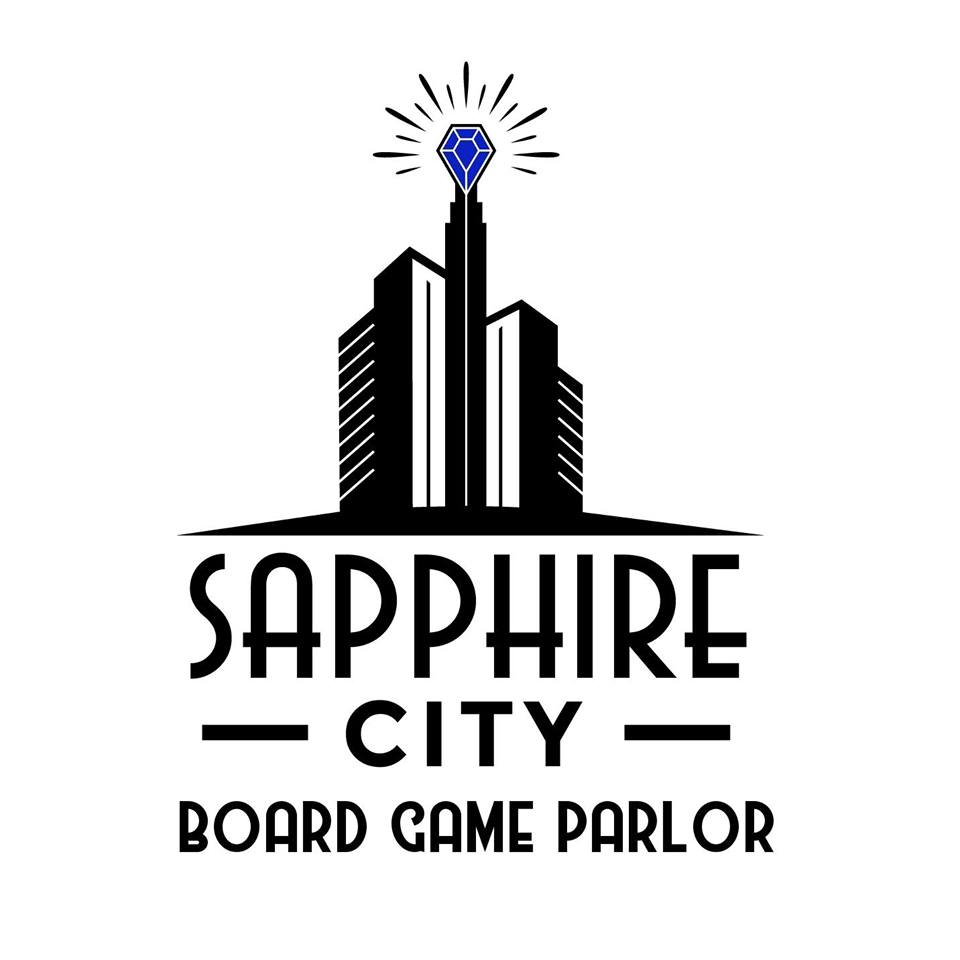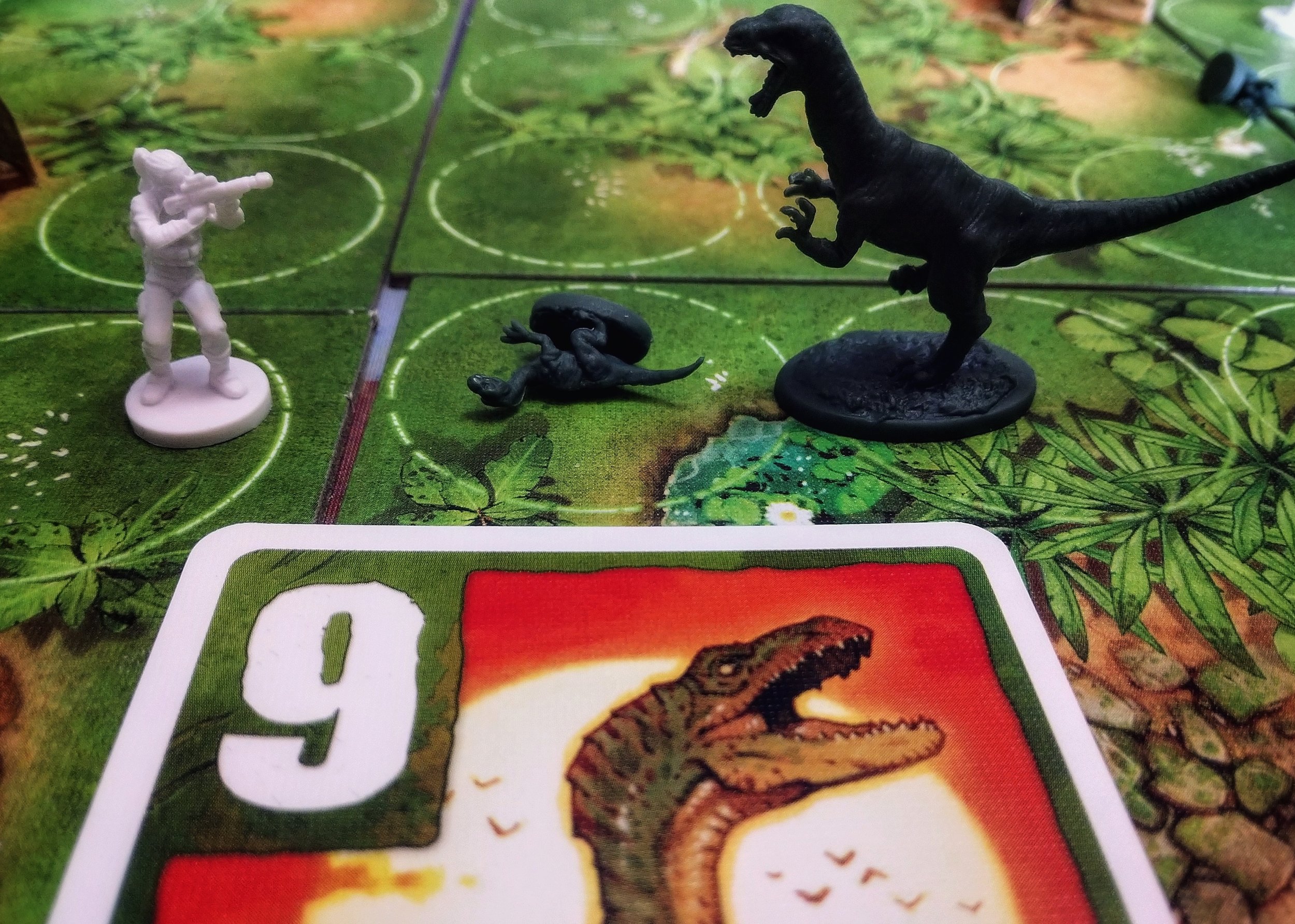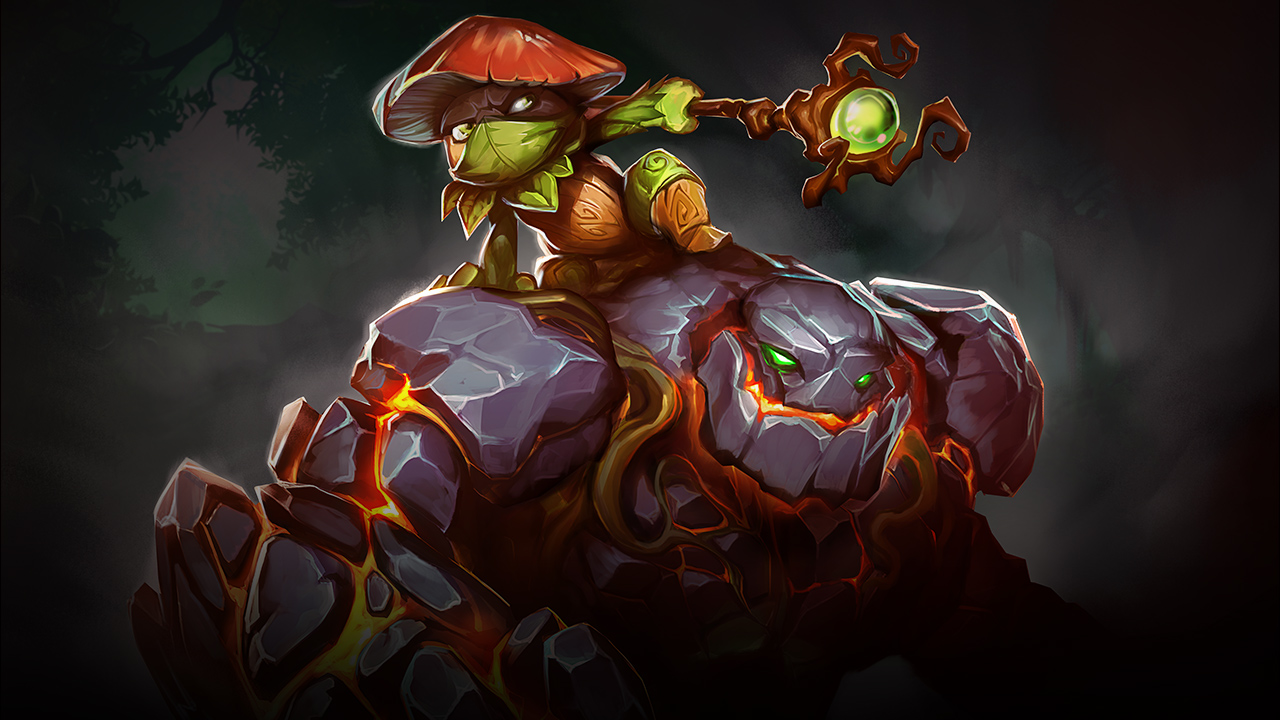Our Favorite Games of 2018
2018 is nearly over! It’s been a big one for us, and somewhere between opening and running the Parlor we managed to find a few moments to play ourselves from time to time. As the year comes to an end we thought it’d be fun to share what particular games caught our attention and left a lasting impression on us this year. Keep in mind that this won’t be a list of games that exclusively came out in 2018, though some will have. Mostly it will be focused on things that happened to cross our paths this year regardless of when they actually released - so “new to us.” Here’s a handful of things we particularly enjoyed:
PART I : JAMES
Party Games
Decrypto (2018)
When Codenames hit in 2015 it arguably took the word-based party game crown, and while it’s quickly becoming a modern classic iello’s Decrypto manages to take the concept of a team-based word game into new and interesting territory.
In Decrypto both teams have a screen with a red filter reminiscent of 90s 3D glasses, which will reveal four words numbered one through four. Players will draw cards revealing a random sequence of these words (“2 1 3” and the like), and they must give word clues linking with the screened word to guide their teammates into guessing the correct sequence.
What makes Decrypto tense and interesting is that the other team is also listening to the clues you’re giving, taking notes and furiously trying to decode what your words could possibly be. If they manage to guess your sequence first, they are one step closer to winning.
Decrypto is a wonderful little word game blending interesting components, a fun aesthetic, and tense moments of triumphant codebreaking and stolen opportunities, all wrapped in a casual thirty minute party game.
Family Games
Pandemic : Iberia (2016)
When the original Pandemic came out in 2008 it shoved the genre of cooperative board games into the mainstream. It’s not uncommon for Pandemic to be among the first five modern board games someone will try when first entering the hobby. I’ve played and enjoyed quite a bit of the original, but I largely avoided the growing list of expansions and reskins, opting to try entirely new games instead.
The theme and art of Iberia caught my eye though, so I gave it a try this year and was pleasantly surprised. To call the game only a “reskin” might be a bit of a disservice. The core of the goals and the mechanics remain similar - work together to avoid catastrophe before diseases take hold - but there’s a number of fresh twists. For example, I played the railwayman, an expert at laying tracks across the Iberian peninsula to speed up treatments. In my track-laying frenzy I thought I’d done my team a favor by expertly linking various sections of the map, until I realized that the cubes, representing the diseased populace, will also take my trains in an effort to get to the nearest hospital in the mode we were playing, exacerbating outbreaks in a way I’d not expected.
For its cool historical theme, sleek thematic art, interesting mechanical additions, (and probably partly for the sheer hilarity I felt when I realized I’d accidentally partly sabotaged my own team) Pandemic Iberia is my favorite family game I played this year.
Card Games
TIE: Keyforge and Lightseekers
Card games are sort of my jam. They were my introduction to tabletop gaming generally in the 90s, and ever since then they’ve been an Achilles heel to my wallet. When a new card game comes out I generally take notice, and often give it at least a try. This year two have caught my attention, and I play each regularly.
Keyforge (2018)
Keyforge is a unique beast. First, it’s literally “unique(tm)” - Fantasy Flight Games’ newest twist on gaming is the the concept of “Unique Games,” board and card games that are entirely different from box to box, with no two copies being the same. The concept has had mixed results applied to board games (Discovery: Lands Unknown) but has proven to be a success when applied to card games. In Keyforge you purchase a fully self contained, procedurally generated deck that you can make no changes to.
I was initially skeptical of the idea. One of the two things I enjoy about card games is that, on at least some conceptual level, you’re getting two games for your money. The game you play against an opponent, and the game you play at home alone with all your cards strewn across the table, trying to build the best path to victory you can from among the cards you’ll include in your deck.
Instead, the removal of deckbuilding has proven liberating and unifying. Excluding more hardcore players willing to purchase many decks for choice sets, rare-hunting is largely absent from the playerbase. Theoretically a single $10 deck purchase can be all you’ll ever need to sit at a table and play with your friends, making it a fabulous first-time entry to card games, or a wonderful companion card game to someone’s main game of choice (Magic or the like). The game itself is fun - similar enough to other “creatures on a board” style card games to be familiar, but with the welcome removal of resources, and a win condition different from the usual goal of reducing the other players life total to zero. Keyforge fills a niche no one knew was missing, and is one of my favorite card games of 2018.
Lightseekers (2017)
Lightseekers has had a unique development life so far. Starting off as a Kickstarter by UK-based company Playfusion, Lightseekers was a companion card game for a blended digital roleplaying game and toyline sold exclusively through Toys-R-Us. Two unexpected things happened after the launch of the Lightseekers world. First, Toys-R-Us went under, effectively killing off the toys and further development of the RPG. Second, Lightseekers the card game ended up being a surprise hit of Origins Game Fair 2017.
To save their whimsical, charming world, they shifted focus to the card game, and the results have been a blast. More sets of cards, the development of an organized play system in progress, and most importantly an incredibly well done phone app that lets you play the game both at the table and on your phone. The integration of the physical game and a digital platform has been seamless, and has allowed the game to grow on an international level, with players able to enjoy the game regularly even if they lack a regular local playgroup.
The game itself is a fresh take on the usual card game. There are no resources to speak of, and on any given turn you can take two actions, which will generally be playing a card from your hand, or using a card on the field. Any actions you don’t take will draw you that many cards, there is no inherent draw step. Many cards, called “buffs,” have a finite lifespan. They will rotate every turn, automatically altering the game with boons for you or negatives for your opponent until they either run out of corners to turn to, or the opposing player finds some way to remove it.
Lightseekers blends a lot of things I love in a game - a relatively simple core set of rules, deceptively deep strategy making perfect use of those rules, a beautiful and fun world that comes alive through the art, and easy accessibility through the phone app. For these reasons Lightseekers is one of (and judging by the amount I’ve been playing it this year, perhaps my main) favorite card game of 2018.
Strategy Games
Terraforming Mars (2016)
The cubes on the water are an accident! We realized our mistake during scoring, no judging!
I avoided Terraforming Mars for a little while. Not actively, but I didn’t seek it out to play despite the critical acclaim it received on arrival two years ago. I’m admittedly a theme player - I’m less interested in mechanics, and appreciate more how well those mechanics help me get lost in a world. With that in mind Terraforming Mars seemed, from the outside looking in, a tad dull. A birds-eye view of the board looked dreary, with little diversity among a handful of different hexes on the board. Corporations weren’t made up of people or projects, but were just a piece of business iconography and text. Half the cards had the look of stock photography rather than the beautiful commissioned art I’d come to expect. I’d pass it being played, admitting it was likely a good game, but just not for me.
I was wrong. I finally got to give it a shot and enjoyed it more than I ever expected to. The ultimate goal is to have the most points before the three criterion for a successfully terraformed planet - sufficient water, temperature, and oxygen levels - are met, and the breadth of strategies available are satisfying. Will you establish cities, small beacons of civilization to help tame the desolate wasteland? Will you learn to grow and cultivate on the planet, creating patches of green in the Martian dust? Will you harness the kinetic force of the asteroids themselves, forcing them to crash to the surface in order to increase the ambient temperature (with the added side benefit of reducing a rival corporation’s green fields to ash)?
Typically euro-style games have a reputation for being light on theme, but Terraforming Mars came to life as I was playing it. I found myself thinking our five player game had ended too quickly, glancing at the rulebook for how to extend the game next time with Corporate Era optional cards, before I looked at the clock and realized that three hours had passed. Any medium-to-heavy weight euro game that can lose me, a dedicated “theme first” player, in the world definitely earns a spot as my favorite strategy game of 2018.
PART II : JESSICA
Look at James's list. It's so well thought out and crafted all wordily. It's fabulous. Well I'm not so good at the words thing. My list really only has one criteria: Would I play it again? That doesn't sound like a high bar, but let me say it another way.
Would I make time to play this game when I know darned well that I have chores, errands, baking, and baby needs on a list longer than my arm?! Let me be frank; for a game to make it to my table, it has to undergo at least four failed starts and be easy enough for my awful Mommy brain to comprehend. Currently my brain is only accepting short sentences!
So without too much exposition, my favorites to make it to the table this year are:
Raptor
Cat lady
Lightseekers
I know what you're thinking, "Did you really only pick the games you won over the last year?" PAH! Hogwash! I'm offended! No. I chose games that I CONSISTENTLY won.
Raptor (2015)
Raptor was just complex enough to make my brain sputter as I looked at the rulebook, but easy enough that the main mechanic is a set of numbered cards. "Oh good," I thought, "I don't have to read them!" Then James handed me the player reference and my little heart sank. I DIDN'T COME HERE TO READ!
It was fine though. As I mentioned above, I creamed James. He thought he was a clever girl, going round and round that bush, but I stole your babies! With all your running, I tranq'ed you and stole all your raptor babies! MWAHAHA! As a two player bonding experience, make sure your partner is a good sport like mine. Because while it's fun to lose this game, winning us always better. Thankfully the board resets easily for the next play and games are quick.
Cat Lady (2017)
I'm not ashamed to admit it. I'm a cat person. I'm the lady who bought a rescue kitten, tried to teach him to walk on a leash, and then spent the next seven years buying him Christmas presents like he was a real boy. So when I saw the box for Cat Lady I knew I had to try it.
The more I play it the more I enjoy the subtleties to the costumed cats who are frowning in dismay at their ridiculous outfits... That being said, I may amend our copy in the library to have special tokens for the food. Those colored cubes aren't cutting it!
I've only played Cat Lady as a 2-player game but I can attest to the strategy of the cat token, which prohibits the same row or column from being taken twice, blocking off your opponent’s goals. Classifying why I like Cat Lady is a bit difficult. It's one part set-collecting, one part card drafting, and 100% frivolous. It's collecting cats. Responsibly. Responsible cat ownership requires plenty of food, toys, and pirate costumes.
Lightseekers (2017)
Lightseekers has definitely gotten the most mileage of my favorite games, mainly because there's an app on my phone. I can challenge James to a duel while I'm putting the baby to bed! The heart of why it's probably my favorite for the year goes back to all the cycles I go through playing collectible card games. Last year I was all about Shadowverse. Early this year, Hearthstone. But there's a fatal flaw with these games - they move too fast for me to keep up with each season and meta of competitive play. “Prime dragon keeper was sooo two updates ago…and that priest deck? Well! You might as well call yourself a noob and be done with it!” With digital CCGs, it feels worse (for me) to sink money into digital booster packs and have nothing tangible to show for it; and to be competitive you better sink real money into the starter decks and tons of boosters or you don't stand even a shred of a chance...
With Lightseekers it's all different. The frantic pacing of new expansion packs isn't there, because they are paired with the releases of the physical game. The app is generous with random chests containing cards, in-game currency, and flair. I haven't spent real money on the app yet (besides my physical collection) and my favorite deck to play is a mythic hero I randomly received in a chest. As for the competitive scene, ranked play seems more relaxed. I can take my silly deck to ranked and see someone else's silly deck, because there’s a large variety of mid-tier functional decks and strategies. This is unlike other mobile card games where there's only the top tier, expensive decks or you don't play ranked. Oh. And my favorite? They've added missions and campaigns to help you get more chests and more loot. I play those more than against real people. They're like little puzzles to pick at, rotating out cards, perfecting your deck until you beat the boss. It's great.
I haven't even gotten to the best part. It's quick and incredibly easy to learn! Honestly, I could teach it to you in under 5 minutes and play through a game with you in less than 20. Even though the art is sweet and whimsicle there's real strategy to it. If you download it, stop in and ask me for my player tag. We'll be friends. It'll be fun.
As we move into 2018 there’s a handful of games on our horizon that we’d like to try - a new set of cards for our mutual favorite card game - Lightseekers: Uprising, our Kickstarter copies of both Nemesis and Court of the Dead : Mourners Call, and a recently teased Terraforming Mars : Legacy, in addition to a number of games that have been out for a while that we’ve not gotten to dive into yet. Overall though, it’s definitely been an eventful year for us personally. We’re looking forward to continuing to host you fine folks into 2019, and gaming vicariously through all of you! Have an awesome new year.










